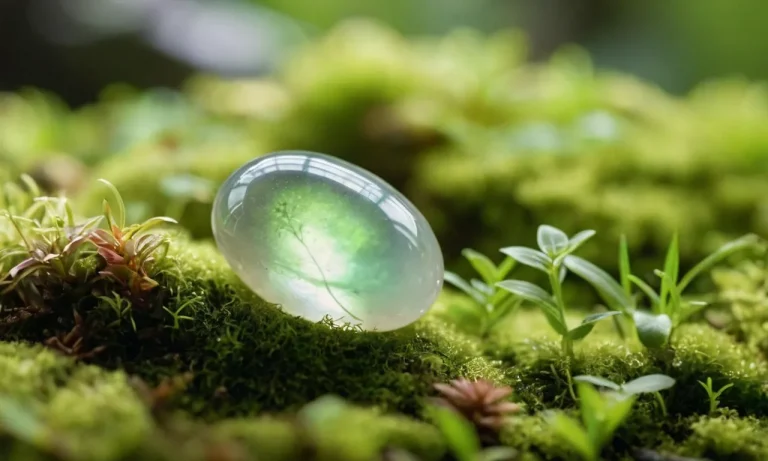Those with hazel eyes often wonder about the significance behind their unique eye color. If you have hazel eyes yourself or know someone who does, you may be curious to learn more about the meaning and myths surrounding this eye shade.
If you’re short on time, here’s a quick answer to your question: Hazel eyes are often seen as mysterious and attractive. They are also relatively rare, making up only about 5% of the world’s population.
In this comprehensive guide, we will explore the genetic factors behind hazel eyes, look at cultural associations and meanings given to this eye color throughout history, and debunk common myths and misconceptions about people with hazel eyes.
What Causes Hazel Eyes?
Hazel eyes are a unique and captivating eye color that is often described as a combination of green, brown, and gold. But what causes someone to have hazel eyes? Let’s explore the fascinating science behind this intriguing eye color.
The Role of Melanin
The color of our eyes is determined by the amount and distribution of a pigment called melanin in the iris, the colored part of the eye. Melanin comes in two forms: eumelanin, which is brown or black, and pheomelanin, which is red or yellow. The combination of these pigments in varying amounts gives rise to different eye colors, including hazel.
In individuals with hazel eyes, there is usually a higher concentration of melanin in the anterior border layer of the iris, while the posterior layers contain less melanin. This unique distribution of melanin creates a blend of green, brown, and gold hues, resulting in the distinctive appearance of hazel eyes.
Rayleigh Scattering
Another fascinating phenomenon that contributes to the appearance of hazel eyes is Rayleigh scattering. This optical effect occurs when light interacts with objects smaller than its wavelength, causing it to scatter in different directions. In the case of hazel eyes, the scattering of light within the iris can enhance and intensify the colors present, creating a mesmerizing effect.
The specific combination of eumelanin and pheomelanin in hazel-eyed individuals, along with the scattering of light, leads to the unique and captivating appearance of this eye color.
To learn more about the science behind eye colors and the role of melanin, you can visit https://www.ncbi.nlm.nih.gov/pmc/articles/PMC1857299/.
Hazel Eyes Throughout History
Hazel eyes have always been a subject of fascination and intrigue. They are a unique eye color that is often described as a combination of green, brown, and gold. Throughout history, hazel eyes have been celebrated for their beauty and mystique. Let’s take a journey through time to explore the significance of hazel eyes in different cultures and eras.
Ancient Egypt
In ancient Egypt, hazel eyes were considered to be a symbol of beauty and were highly revered. The Egyptians believed that the eyes were the window to the soul, and hazel eyes were believed to possess a special connection to the gods. Cleopatra, one of the most famous Egyptian queens, was said to have had hazel eyes, which added to her allure and power.
Ancient Greece and Rome
In ancient Greece and Rome, hazel eyes were associated with wisdom and intellect. The philosopher Aristotle believed that individuals with hazel eyes possessed a unique blend of intelligence and intuition. The Roman poet Ovid also praised hazel-eyed individuals in his works, considering them to be captivating and alluring.
The Middle Ages
During the Middle Ages, hazel eyes were often associated with magic and witchcraft. They were seen as a mark of supernatural power, and individuals with hazel eyes were sometimes accused of being witches or warlocks. This belief was influenced by the fear and superstitions that prevailed during this time.
The Renaissance
In the Renaissance era, hazel eyes were admired for their rarity and beauty. Artists like Leonardo da Vinci and Botticelli depicted hazel-eyed subjects in their paintings, adding to the appeal and desirability of this eye color. Hazel eyes were seen as a symbol of uniqueness and individuality.
Modern Associations
In modern times, hazel eyes continue to be admired and sought after. They are often associated with traits such as mystery, creativity, and versatility. Many celebrities, such as Angelina Jolie and Johnny Depp, have hazel eyes, further popularizing this eye color. Hazel eyes are seen as a sign of beauty and uniqueness in today’s society.
The history of hazel eyes is a testament to the enduring fascination with this eye color. Whether they are seen as a symbol of beauty, intellect, or individuality, hazel eyes have captivated people throughout the ages.
Common Myths and Misconceptions
Hazel-Eyed People are Sneaky
One common myth surrounding hazel-eyed individuals is the belief that they are more prone to being sneaky or deceitful. However, this is purely a baseless stereotype. Eye color has no correlation with a person’s character or behavior. Hazel eyes are simply a result of a combination of different pigment variations in the iris, and they do not determine a person’s personality traits. It’s important not to judge someone based on their eye color or make assumptions about their character.
Hazel Eyes Indicate Mixed Ancestry
Another misconception about hazel eyes is that they are an indication of mixed ancestry. While it is true that hazel eyes are more common in certain populations, such as those with European or Middle Eastern heritage, it does not automatically mean that someone with hazel eyes has mixed ancestry. Eye color is influenced by various genetic factors, and it is possible for individuals with hazel eyes to have a single ethnic background. Eye color is a complex trait that can be influenced by multiple genes, making it difficult to determine someone’s ancestry based solely on eye color.
Hazel Eyes are More Sensitive to Sunlight
There is a belief that people with hazel eyes are more sensitive to sunlight compared to those with other eye colors. While it is true that lighter eye colors, including hazel, may have less melanin in the iris, which can make the eyes more susceptible to sunlight, this doesn’t mean that all hazel-eyed individuals will have the same sensitivity. Eye sensitivity to sunlight varies from person to person and is not solely determined by eye color. It is important for everyone, regardless of eye color, to protect their eyes from harmful UV rays by wearing sunglasses and using sunscreen around the eyes.
Conclusion
In the end, hazel eyes are simply another variation in the wide spectrum of human eye colors. Their rarity and blending of shades lead many to find them uniquely beautiful and intriguing. However, there is no scientific evidence confirming special powers or meanings associated with hazel eyes. While the genetic factors and cultural history behind them are fascinating, each person’s character and abilities are defined by far more than iris pigmentation alone.






